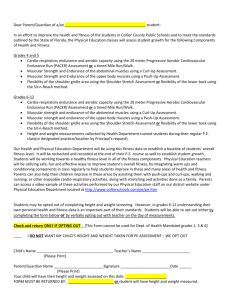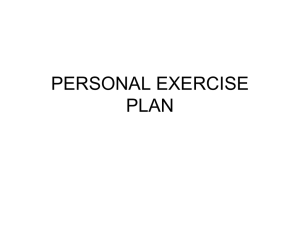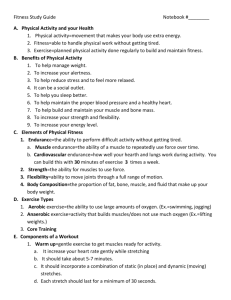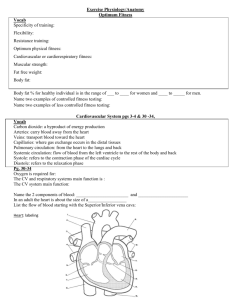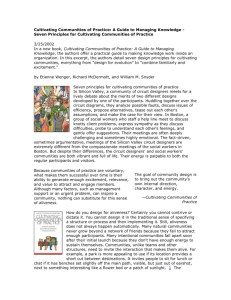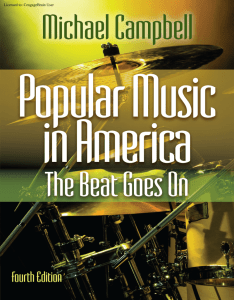DNJ Column 20: The Importance of Music When You Exercise
advertisement
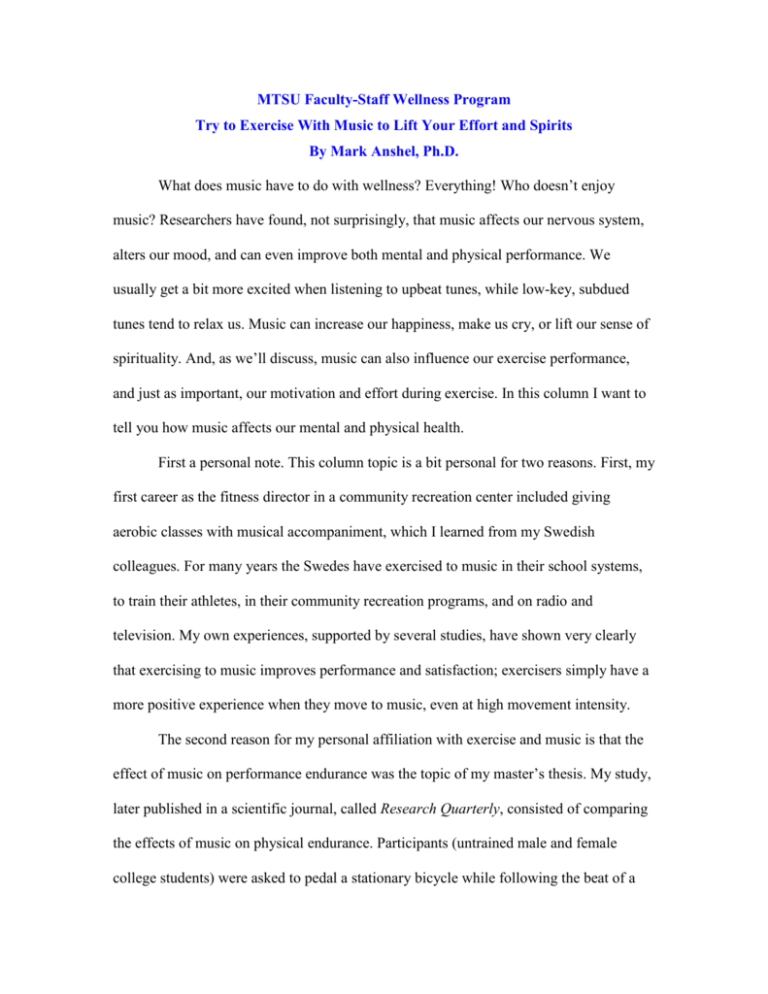
MTSU Faculty-Staff Wellness Program Try to Exercise With Music to Lift Your Effort and Spirits By Mark Anshel, Ph.D. What does music have to do with wellness? Everything! Who doesn’t enjoy music? Researchers have found, not surprisingly, that music affects our nervous system, alters our mood, and can even improve both mental and physical performance. We usually get a bit more excited when listening to upbeat tunes, while low-key, subdued tunes tend to relax us. Music can increase our happiness, make us cry, or lift our sense of spirituality. And, as we’ll discuss, music can also influence our exercise performance, and just as important, our motivation and effort during exercise. In this column I want to tell you how music affects our mental and physical health. First a personal note. This column topic is a bit personal for two reasons. First, my first career as the fitness director in a community recreation center included giving aerobic classes with musical accompaniment, which I learned from my Swedish colleagues. For many years the Swedes have exercised to music in their school systems, to train their athletes, in their community recreation programs, and on radio and television. My own experiences, supported by several studies, have shown very clearly that exercising to music improves performance and satisfaction; exercisers simply have a more positive experience when they move to music, even at high movement intensity. The second reason for my personal affiliation with exercise and music is that the effect of music on performance endurance was the topic of my master’s thesis. My study, later published in a scientific journal, called Research Quarterly, consisted of comparing the effects of music on physical endurance. Participants (untrained male and female college students) were asked to pedal a stationary bicycle while following the beat of a metronome set at 50 beats per minute under each of three conditions. In one condition, the participants performed the task with no music (metronome only). The second condition required them to pedal the bicycle with background (rock) music, while in the third condition students pedaled the bicycle in rhythm to the music, again, at 50 beats per minute. The results showed that the third condition - pedaling the bicycle in rhythm to the music – resulted in significantly longer performance than the other conditions. The other conditions resulted in shorter exercise times, although the students exercised longer to background music than no music at all. There are two likely reasons moving in rhythm results in superior performance: the distraction hypothesis and momentum. The distraction hypothesis says that the performer is distracted by the external stimuli of music, which allows the person to ignore the effects of intense physical activity, such as fatigue and exertion. We use a strategy called external attentional focusing. The second explanation of improved momentum is that music improves our forward motion, resulting in less effort. How does music affects us, and how can we use it properly to improve our exercise performance and fitness? Music affects our emotions and mood: Depending on the situation, such as performing aerobic exercise or watching a scary film, fast-paced music usually increases adrenalin, the hormone that speeds the heart rate and increases arousal level (excitation). The results could mean increased positive mood and emotional states, such as elation, happiness, enthusiasm, and confidence. But it can also result in negative moods such as sadness, depression, worry, or fear. And, as many folks have experienced, music can influence emotions when engaging in spiritual activities, such as prayer or attending events that are personally meaningful. Music alters our nervous system: Heart rate can be increased within 10 seconds of listening to music that is fast-paced and loud, while our heart rate usually slows down when exposed to music that is slower-paced and relatively quiet. This is because hormones are released into the blood stream that immediately either increases or decreases our arousal level, such as heart rate, respiration rate, and other physiological processes. Music can improve exercise performance: Music has been found to improve exercise performance, and should be incorporated into our exercise routine. This is important, especially for persons who find exercise boring. As indicated earlier, music can prolong your exercise endurance when performing aerobic activity, especially if you are moving in rhythm (synchronization) to it. Exertion and effort also increase if the music is fastpaced. Moving at a slower beat will relax us, which is better for stretching or movements common in yoga or Palates. Using Music for Improved Fitness: Here are a few guidelines for experiencing the benefits of music during exercise. First, listen to music that you enjoy. If you find a particular tune annoying, the only emotion you will experience is stress, and there will be no music benefit. Second, select music that is compatible with your immediate goal. If you want to improve aerobic conditioning, you’ll need to listen to music with a faster beat, and again, music that you enjoy. My study with college students included the use of rock music, which they enjoyed. Other types of movements, however, such as stretching, Palates, or yoga requires a slower-paced selection. An obvious disadvantage to using the radio as your source of music is not being able to select the most desirable tune to meet your specific need. Third, try to use music that allows you to move in synchronization to the exercise being performed, similar to a group exercise class held in a fitness club. Background music is better than no music to experience desirable outcomes, however, moving in rhythm to the musical beat is even better. This is the reason fitness classes use music in a pre-planned sequence in which the instructor knows exactly the order of exercises in a given routine. Finally, a word of caution about outdoor walking and jogging: Even though it is recommended that we walk and jog against traffic (so you can see vehicles coming toward you), it is not recommended to use these listening devices when exercising on the streets. We need to be listening for signals that require our immediate attention and reaction. Technology allows us to have many options to individualize musical selections, such as ipods and other listening devices. Pre-record your favorite music so that you will feel motivated to give 100 percent effort, making exercise a more enjoyable experience.


